Today we are going to study Definition, Layout, Working, Advantages, Disadvantages, and Application [Notes with PDF] of Hydro Power Plant.
Note: At the bottom of every article you can easily download PDF.
Hydro Power Plant Definition:
Hydro Power Plant is an electricity-producing plant in which the water is an essential fuel, the potential energy is being converted into kinetic energy and kinetic energy is further converted into mechanical and into electrical energy with the help of a turbine and motor.
We will understand how it works in very detail. So now let’s study construction.
Hydro Power Plant Layout or Construction:
The following Construction or Layout of Hydro Power Plant:
- Headpond or Reservoir
- Control gate
- Penstock
- Turbine
- Draft Tube
- Tail Race
- Transmission Line
- Generator
- Transformer
- PowerHouse
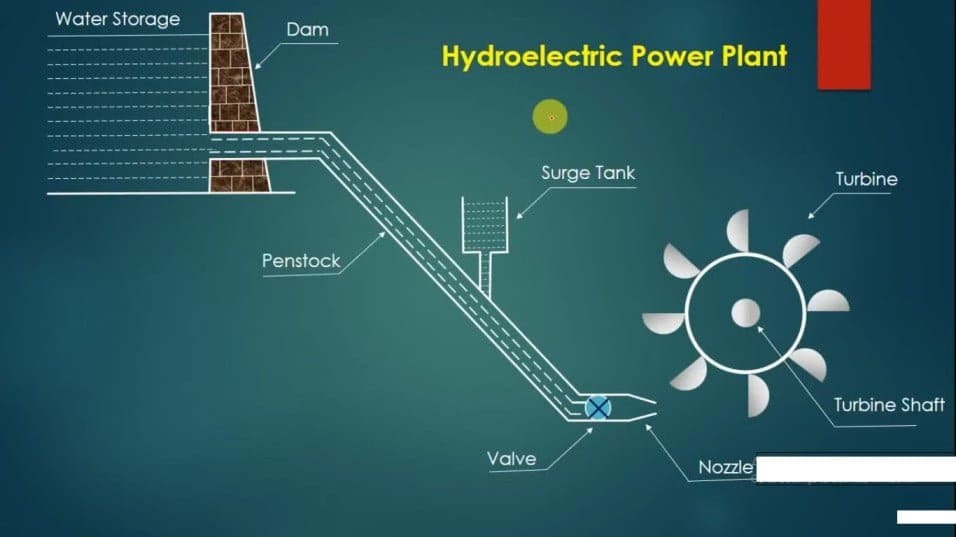
Headpond:
There is one reservoir which is having a large area in which A huge amount of water is being stored here. So the energy here is in the form of Potential energy.
We Know Potential Energy is mgh [Mass*Gravitational force* Height]
Control Gate:
There are having multiple control gates in a single hydro power plant. The work of control gate is to regulate the flow of water. When the control gate is fully opened the speed of water flowing is maximum.
Penstock:
The penstock is also called Pipe. The water stored at the dam or head pond is being released by the control gate, the water starts moving to the turbine. The Head pond is having high heights and the Turbine is situated below.
So the speed of water gets increased because of gravitational force. The material of the penstock is hard steel being used.
Valve and Nozzle:
The valve work is similar to the control gate and Nozzle work is striking water in a specific direction [Pressure is high] that is a turbine blade.
Surge tank:
Surge tank is an additional and essential component which is used to accumulate the water which is in pipe when we want to close the turbine working. Or you can say it is used for avoiding the pipe burst.
Turbine:
Turbine is a device which is used for generation of electricity. Turbine work is, the fluid having kinetic energy is being converted into rotational energy.
The high kinetic energy water comes through the penstock to the nozzle and strikes the turbine blades. The turbine blades start rotating. So the rotational energy can also be called mechanical energy.
Draft Tube:
Drat tube is mechanical component which is used for enlarging the area of pipe for sending maximum fluid to the other side.
Tail Race:
Tailrace carries water away from the plant. Hence the water is sent to the river.
Transmission Line:
The transmission line carries power from the power unit or transformer and transfers or supplies from one source to another. It is made up of conductor.
Generator:
When the turbine buckets starts rotating, the turbine shafts also rotating. the motors are attached to the turbine shafts which is also rotating and generator is attached to them which generates electricity.
Transformer:
The transformer is attached to the generator. The electricity genearted is now controlled by the transformr. The work of transformer is to set up or set down the voltage.
Power House:
The name power house means there is a house in which the power is being stored ]and released to the transformer and so on.
Hydro Power Plant Working:
In a large amount of water is available or you can say a river. The water is being stored in the reservoir which is in the form of potential energy. With the use of the control gate, the water is being released and water starts flowing into the penstock. Here two components are attached 1. Surge tank, Valve, and Nozzle.
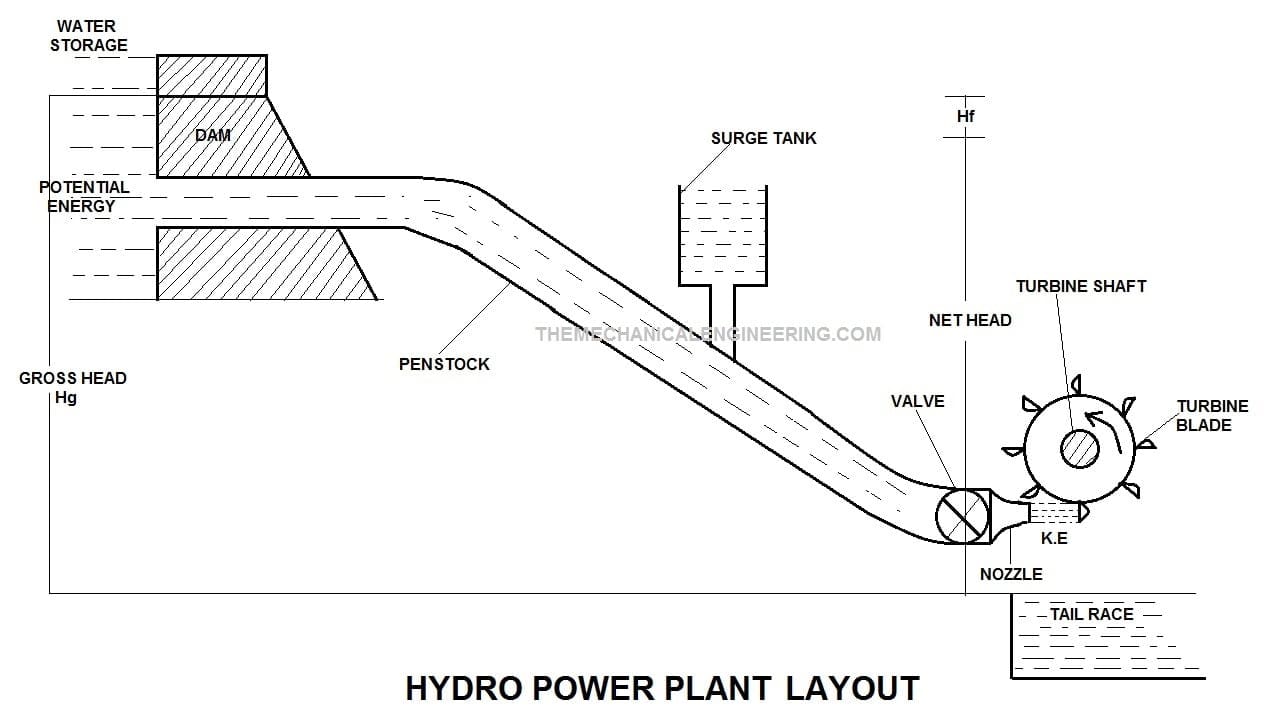
[Potential Energy to Kinetic Energy to Mechanical Energy to Electrical Energy]
Initially, the valve is closed. But when the water reaches up to the max level that can create high pressure then we on the valves. The water with high pressure starts flowing and strikes to the turbine blades through the nozzle.
The turbine blades start rotating. So till now, we observed the water which is having PE is now converting into KE.
In the turbine blade, an electric motor is attached to the turbine shafts. So rotation of turbine blades also rotates the turbine shafts, which also rotates the electric motor. Hence Kinematic energy into mechanical energy and then further it is converted into electric energy.
The energy generated is sent to the powerhouse, Transformer, and Transmission line.
The water which is rotating the turbine blades is now sent to the river via a tailrace.
The hydropower plant is constructed to store the water in a large amount. When the water reaches up to the max level then it is being released which also causes the flood in some area (due to sudden release of water).
Hydro Power Plan Site Selection:
The factor which includes for selection of Hydro Power plant are:
- Environmental effect
- The water availability
- Water storage
- Head of water
- Site accessibility
- Distance from the load center
- Types of the land of the site
- Water Pollution
- Geological Investigation
Now let’s discuss each in detail.
Environmental effect:
Environmental effect is one of major problem which should be not occur so the place can be choose which is free from hazards and chemical effects and so on.
The water availability:
In Hydro Plant water is an essential fuel. Water availability is needed to plant for the rotating turbine blade and generating electricity.
Water storage:
After the availability of water, we must store the water in a dam So we can constantly provide water to the turbine and with high-pressure energy as I explained above.
Head of water:
To increase the flow of water from Dam to turbine blades.
Site Accessibility:
It is also one of an important factor. The power generated from the plant that can be utilized easily. It should have transportation facility be road or train.
Distance from the load center:
If there is more distance between power plant to the load center then transmission cable is used more and hence cost will be increased an so on.
Types of the land of the site:
The Power plant needs more space and it should be kept in mind that land cost must be cheap.
Water Pollution:
Water pollution is one of the major factor. The plants should be free from water pollution. If there is water pollution then chances of loss of equipment is much.
Geological Investigation:
Plant construction should be strong and stable. This construction can withstand natural calamities like thunderstorms and earthquakes, etc.
Hydro Power Plant Working Video:
Hydro Power Plant Advantages:
The following advantages of Hydro Power plant are:
- Hydro-generation has a unique and significant role to play particularly in the operation of interconnected power systems.
- The operating cost of the hydroelectric plant including auxiliaries is considerably low when compared with thermal plants. The annual operating and maintenance cost of a thermal plant is approximately 5- 6 times that of a hydro plant of equal capacity.
- These are simple in design easy to maintain, pollution-free with zero fuelling cost.
- The cost of power generation is less.
- The life expectancy of a hydroelectric power plant is more. The useful life of a thermal plant is 20-25 years as against 100-125 years for the hydro plants.
- There is no problem with handling the fuel and ash and no nuisance of smoke exhaust gases and spots and no health hazards due to air pollution.
- The fuel needed for the thermal plant has to be purchased, whereas in Hydro-plant the fuel cost is totally absent.
- Hydroelectric plants are quick to respond to the change of load compared with thermal Power Plant or nuclear plants.
- The rapidly fluctuating loads are served most economically by Hydro-plant.
- The machines used in hydel plants are more robust and generally run at low speeds at 300-400 RPM, whereas the machines used in thermal plants run at a speed of 3000- 4,000 RPM.
- The efficiency of the hydro plants does not change with age, but there is a considerable reduction in the Efficiency of thermal as well as a nuclear power plant with age.
- In a hydroelectric plant, there are no standby losses, whereas these are unavoidable for thermal plants and the number of operations required is considerably small compared with the thermal power plant.
- It does not contribute to air and water pollution to the greenhouse effect
- Usually, the hydro station is situated away from the developed area therefore the cost of land is not a major problem.
Hydro Power Plant Disadvantages:
The following disadvantages of Hydro Power plant are:
- The capital cost (cost per kilowatt capacity) installed ) of the hydro plant is considerably more than the thermal plant.
- It takes a considerable long time for its erection compared with thermal plants.
- Power generation by the hydro plant is only dependent on the quantity of water available which in turn depends on the natural phenomenon of rain. The dry year is more serious for the hydroelectric project.
- The site of Hydroelectric station is selected on the criterion of water availability at economical head such sites are usually away from the load center.
- The transmission of power from the power station to the load center requires along transmission lines. Therefore investment required for long transmission lines and loss of power during transmission is an unfavorable factor for the economical selection of hydro plants.
Related Article:
Different Types of Valve
Renewable vs Non-Renewable Energy Resources
Pelton Wheel Turbine
Thermal Power Plant
This is all about the Hydro Power Plant. Let me know have you understood or not or if you have any doubt please type in the comment box. And If you like the article please do share it with your friends and family.

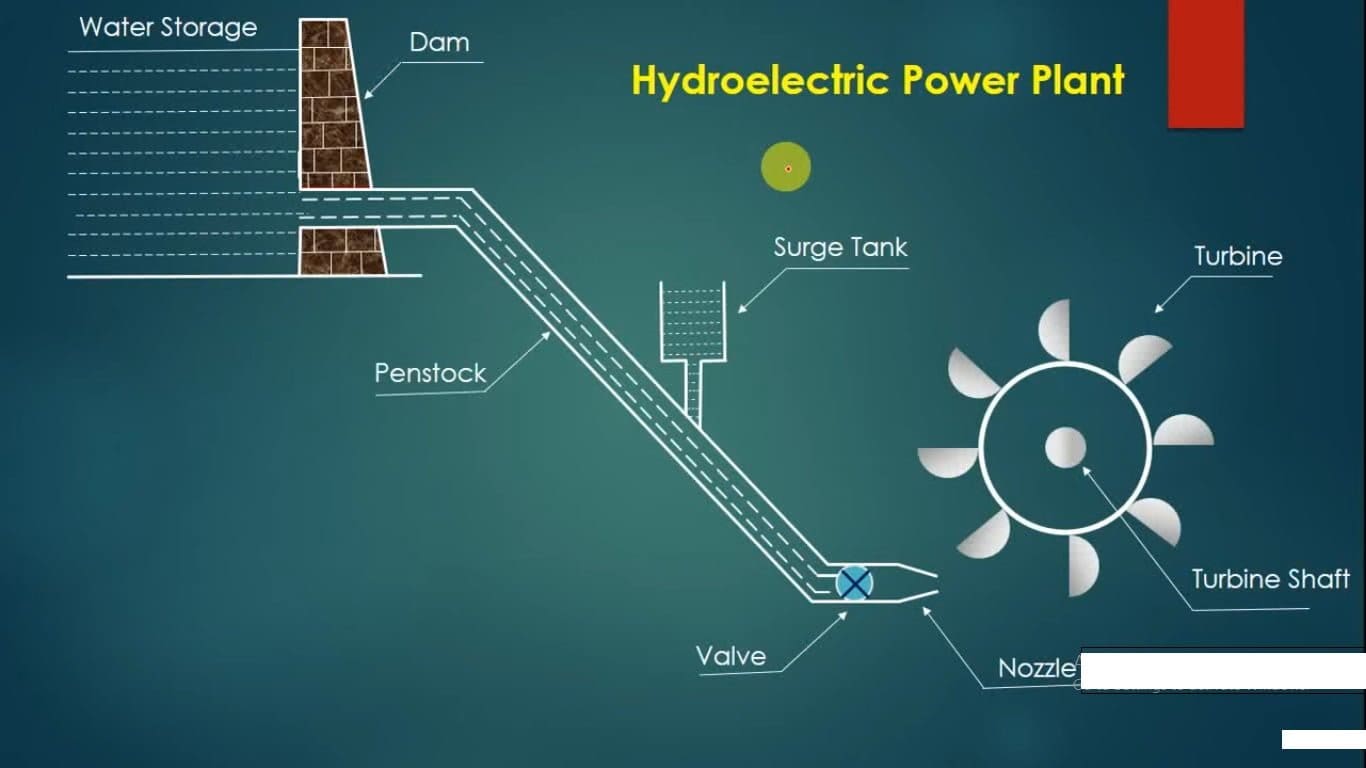

![Different Types of Measuring Tools and their Uses [Notes & PDF] Feature Image of Types of Measuring Tools](https://themechanicalengineering.com/wp-content/uploads/2023/01/Feature-Image-of-Types-of-Measuring-Tools-300x171.jpg)
![Steel: Properties, Different Types and Applications [Notes & PDF] Feature Image of Steel](https://themechanicalengineering.com/wp-content/uploads/2023/01/Feature-Image-of-Steel-300x168.jpg)
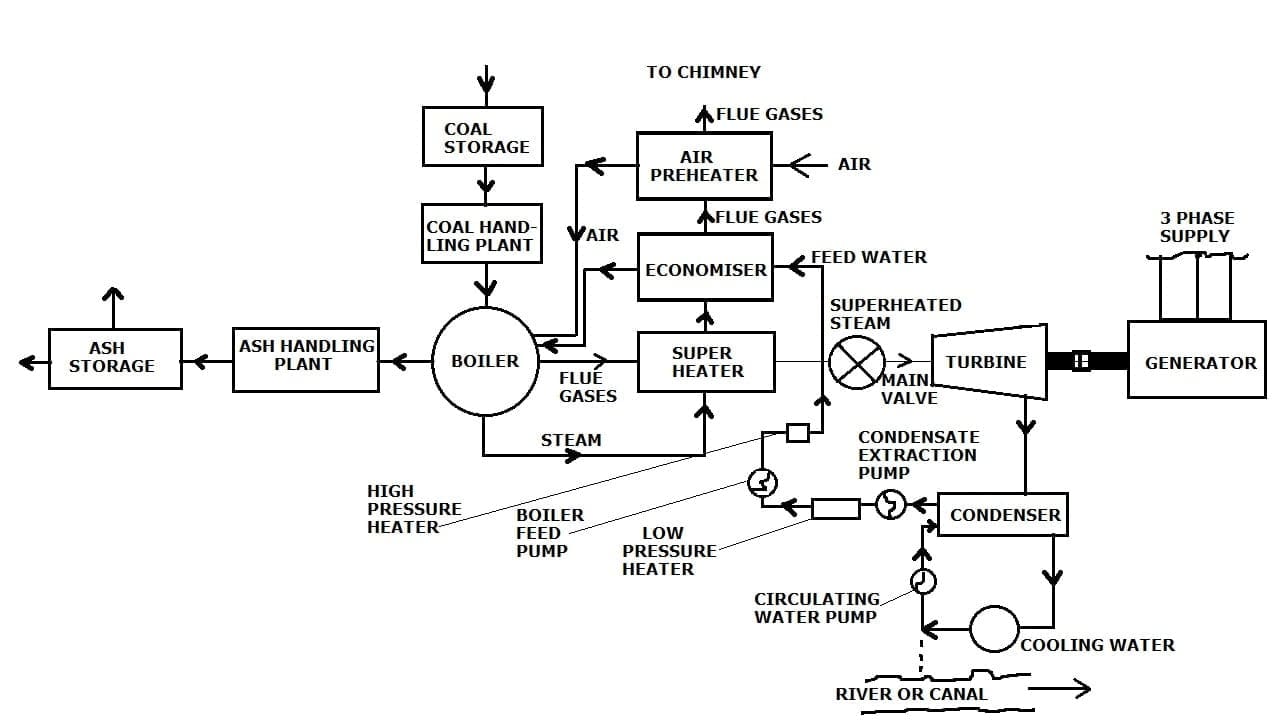
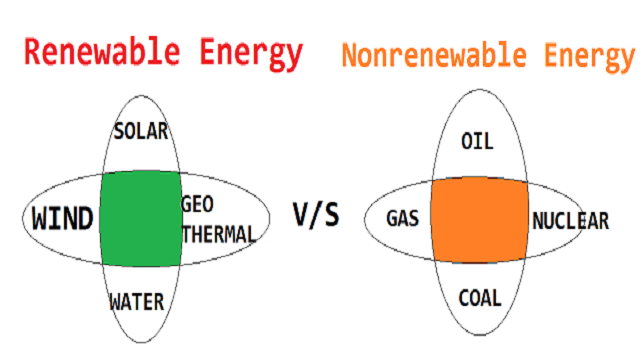
Discussion about this post